Tracey Warr's Blog, page 26
November 2, 2016
Castle Escapes
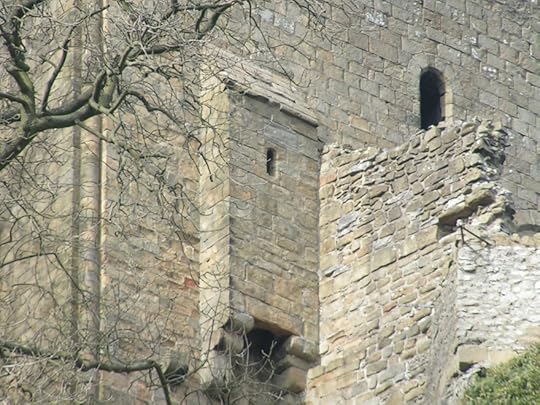
My blogpost on Gerald FitzWalter, a Norman frontiersman in south Wales in late 11th and early 12th centuries, has just been published on the English Historical Fiction Authors blog.
One of Gerald’s many colourful exploits included an escape down a latrine chute during a Welsh attack in 1109 on his castle of Cenarth Bychan. The latrine chute may have resembled the one shown above, and Cenarth Bychan was very likely the castle in Wales now known as Cilgerran.
Gerald is one of the main characters in my recently published novel Conquest I: Daughter of the Last King, and I am writing more about him now in the sequel, Conquest II: The Drowned Court, which will be published by Impress Books next autumn.
[Photo above of Peveril Castle via Wikimedia Commons. By Dave.Dunford]
Filed under: Blog Tagged: middle ages, Normans, Pembroke, wales








October 26, 2016
As Above So Below
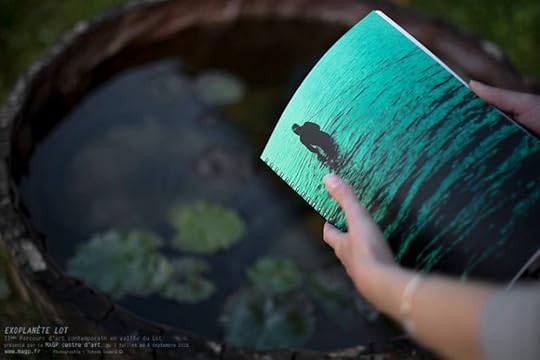 Tracey Warr, Meanda. Photo: Yohann Gozard for Exoplanet Lot.
Tracey Warr, Meanda. Photo: Yohann Gozard for Exoplanet Lot.As Above So Below is an arts and astronomy project at ACA in Allenheads, Northumberland, UK, coinciding with the building of a new community observatory.
Earlier this year I ran a future fiction writing workshop with schoolchildren and installed a ground text around the Armstrong Hydraulic Engine in Allenheads village. My future fiction novella, Meanda, and the outcomes of the children’s workshop will feature in next weekend’s finale exhibition, along with the work of 17 other artists, 28-30 October 2016. Full details:
Filed under: Blog Tagged: art, astronomy, exoplanet, observatory, water








October 8, 2016
Good questions on the writing process
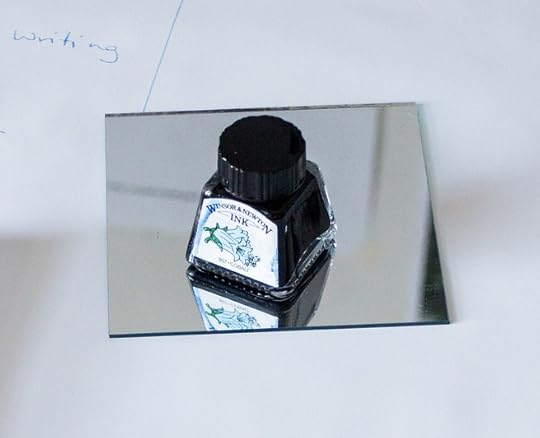
I am currently on a Blog Tour for my new novel, Conquest: Daughter of the Last King and have been tackling some very good questions from bloggers about researching, writing and publishing processes, as well questions about the novel itself. See some of my answers here:
Trip Fiction, 16 October 2016
The Cosy Reader, 10 October 2016
Wee Reader, 8 October 2016
Portobello Books Blog, 3 October 2016
The Writing Desk, 1 October 2016
Photo: Salla Lahtinen.
Save
Filed under: Blog, Writing Tagged: novel, wales








WeeReader Interviews: Tracey Warr!
This weekend I have an interview with historical fiction author Tracey Warr for you. The lovely people at Impress Books were kind enough to ask me if I wanted to be part of the blog tour for Warr…
Source: WeeReader Interviews: Tracey Warr!
Filed under: Uncategorized








October 7, 2016
Writing with Water
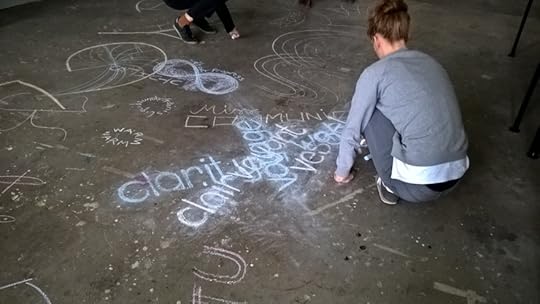 Ida Larsen making word confluences in the Writing with Water workshop
Ida Larsen making word confluences in the Writing with Water workshopAs part of my current Frontiers in Retreat residency with HIAP on Suomenlinna island, Finland, I ran a two day workshop on Writing with Water with postgraduate students from University of the Arts, Helsinki from the new Ecology and Contemporary Performance MA and from Performance Studies – Christiana Bissett, Ida Larsen, Elina Minn and Jussi Salminen. We considered writers on water including Bachelard, Deakin, Gooley. We discussed the behaviours, characteristics, movements, political, biological, environmental and psychological significances of water. We discussed immersion, the littoral, fear and love for water, dissolution. I presented recent water projects including my water exoplanet novella, Meanda and the River Runs collaboration with Urbonas Studio. We looked at recent work with water by other artists including Tuula Narhinen, Susan Derges, Sarah Kenchington and Bram Arnold. We made experiments outside on the island and in HIAP’s Project Space in order to generate and develop the beginnings of some ideas for texts, images, actions with and about water. One of the workshop participants reports below:
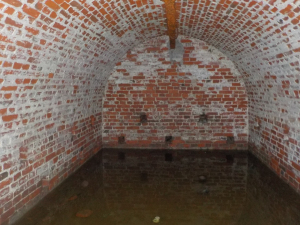 Jussi Salminen, Flashlight Cave
Jussi Salminen, Flashlight CaveJussi Salminen, Work Seeds
I was playing with the idea, that life, as we know it, arrived to planet earth from outer space in the form of water. This water included consciousness. And “Consciousness is continuous … without breach, crack or division. It is nothing jointed; it flows” (William James, The Principles of Psychology). I was searching for altered states of consciousness of water. Where has water been through? I found a man-made cave occupied by water. The human mind developed in water-made caves, so what has a man-made cave done for water? I started to examine water with altered states of consciousness in this man-made cave by voice work (humming into the flooded reverberating space), wall drawings, and by taking a sample with me to study through smell and observation. I would like to take this research further into laboratory work (microscopic testing, electric charge etc.), site-specific work (Plato’s cave for water) and bodywork (telepathy, contact, encounters). The water sample was tinted brown, active, squirming with life, in comparison with the flat, still, odourless water from the tap. And what are we going to do with all this stupid water (tap water)? From the springs I can hear my ancestors calling!
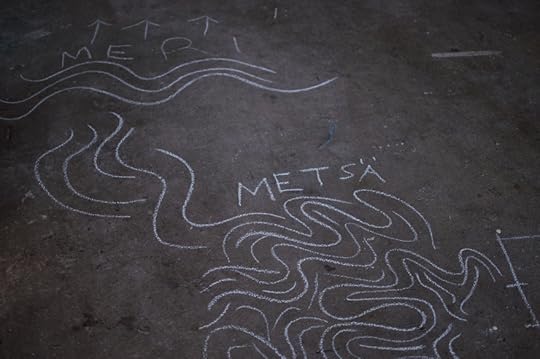 Elina Minn, Fictional Hydramap in the Writing with Water workshop. Photo: Salla Lahtinen.
Elina Minn, Fictional Hydramap in the Writing with Water workshop. Photo: Salla Lahtinen.Filed under: Blog, Frontiers in Retreat Tagged: art and ecology, water








October 3, 2016
Blog Tour: Conquest – Daughter of the Last King
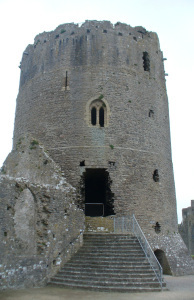 Pembroke Castle, Wales, where one of the characters in my novel, Gerald FitzWalter foiled Welsh attackers who were besieging the castle. He made an insouciant pretence that he had a limitless supply of food inside the castle, by throwing half-eaten pig carcasses over the walls and leaving a faked letter where the Welsh rebels would find it. That’s a true story about him. He was a wily guy!
Pembroke Castle, Wales, where one of the characters in my novel, Gerald FitzWalter foiled Welsh attackers who were besieging the castle. He made an insouciant pretence that he had a limitless supply of food inside the castle, by throwing half-eaten pig carcasses over the walls and leaving a faked letter where the Welsh rebels would find it. That’s a true story about him. He was a wily guy!Latest blogpost published today in the blogtour for my new novel:
Earlier stops in the blogtour last week:
And others coming up soon with Wee Reader, The Cosy Reader and more. Thanks to the bloggers for hosting me and to my publicist at Impress Books, Natalie Clark, for organising it.
A bit sad that, at the moment, I can’t be in the UK and France (where I have lots of loyal readers!) to celebrate the launch of the book in person. I’m currently on a writing residency on a Finnish island and will be going to Iceland after this (so not so bad!). Looking forward to book launch events soon (more news on that coming later). It’s great, however, to be connecting with bloggers and readers all over the place via this Blog Tour.
The new novel, Conquest: Daughter of the Last King, is set in England and Wales at the turn of the 11th century. It focusses on the tumultuous experiences of a young Welsh noblewoman, Nest ferch Rhys, who is caught up in the struggle between the Welsh and the Normans. She is symbolically significant to both sides and the book aims to evoke her torn affections and loyalties and her efforts to regain control of her own destiny. The book is the first in a trilogy about Nest.
Save
Filed under: Blog, Books Tagged: historical fiction, middle ages, Normans, wales, women in history








September 30, 2016
You never know how the past will turn out*
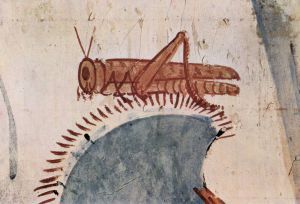 Locust depicted in an ancient Egyptian mural
Locust depicted in an ancient Egyptian muralIt’s interesting to think about how contemporary details find their way into historical fiction. I’m not talking about errors and anachronisms, but how writers use what they see and hear around them and turn it into something else in their fiction. The locusts kept in a classroom by the creepy tutor in my new novel, for instance, are based on my own schooldays in north London when we had a huge vitrine of chirping locusts down one side of the classroom.
A lot of detail in my early medieval novels comes from historical research but equally a lot is contemporary experience that I’ve transfigured and transported back in time. I saw a couple parting from each other at a bus stop in Oxford and transformed that into an 11th century French countess separating from her Catalan lover at Narbonne Harbour. I had lunch with my Dutch neighbour and was transfixed by the beauty, verve and humour of one of her gay friends. He became the model for the Fleming lover of a 12th century Welsh princess. The appearance of the 10th century Count Audebert de La Marche in my second novel, The Viking Hostage, is based on a dear friend who died a few years ago. A scene where a 12th century lady is surprised by King Henry I with a magical birthday punt on the Thames at midnight, is based on my own midnight birthday punt with friends many years ago in Oxford.
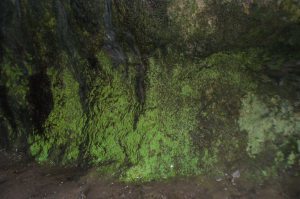 The prehistoric Wogan Cave beneath Pembroke Castle, Wales, which lets out onto the river
The prehistoric Wogan Cave beneath Pembroke Castle, Wales, which lets out onto the riverTwo of my novels are set in Pembrokeshire, Wales, where I breathed the atmosphere of castle ruins, studied the lay of the land, their relationships to rivers, imagined how to break in or break out. I gazed at Carmarthen Bay seascapes from train windows and walked the Wales Coastal Path. I lurked in medieval ruins, accompanied by my long-suffering best friend, who had to frequently suppress the urge to say, ‘can we go home now?’.
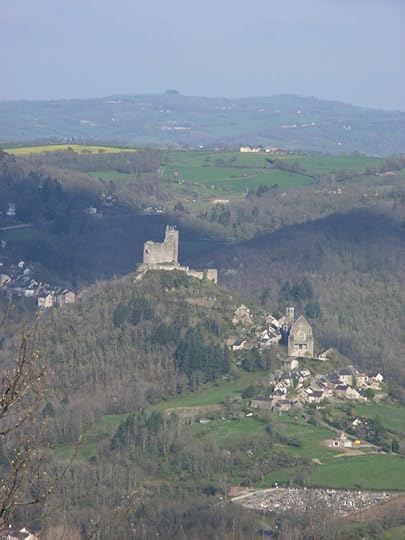 Najac, France
Najac, FranceI walked into the nave of the medieval church of Eglise Saint-Jean at Najac in France, and stepped on the coloured light patterns projected by stained glass windows. I imagined how it might feel for one of my heroines, to be stepping in silk slippers on these pools of coloured blue, red and yellow light, walking towards the altar to marry a man she had only met once before in a childhood betrothal. You never know how the present will turn out either, when you start making things up in fiction.
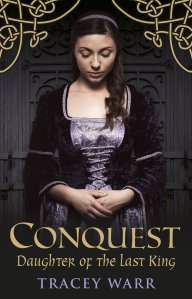
Tracey Warr’s new novel Conquest: Daughter of the Last King is published by Impress Books today.
*My blogpost title is a quote from Maria Loh’s marvellous book on Renaissance Artists (Still Lives, 2015).
Save
Save
Filed under: Blog, Historical Fiction Tagged: books, middle ages, writing








September 25, 2016
The medieval Welsh Helen of Troy?
My new novel Conquest: Daughter of the Last King is published by Impress Books next week and is the first in a trilogy about Nest ferch Rhys – the daughter of the last independent Welsh king at the end of the 11th century. Nest is a controversial historical figure. She makes significant appearances in medieval accounts as a wife two or three times over and mistress to both the Norman King Henry I and the Welsh Prince Owain ap Cadwgan who kidnapped her from one of her Norman husbands. I was partly motivated to write the trilogy by irritation at some recent historians’ too easy attribution of her eventful marital and extra-marital career to her own lasciviousness or her extreme beauty – ‘the Welsh Helen of Troy’. I wanted to try to write into her story, discovering other possible interpretations of what happened to her.
In advance of the book’s release on 1 October you may be interested in a couple of my recent interviews on writing medieval fiction:
Stepping into Early Medieval Worlds, Words with JAM, 18 May 2016
A Troubadour of Medieval Life, The Displaced Nation, 11 Mar 2016
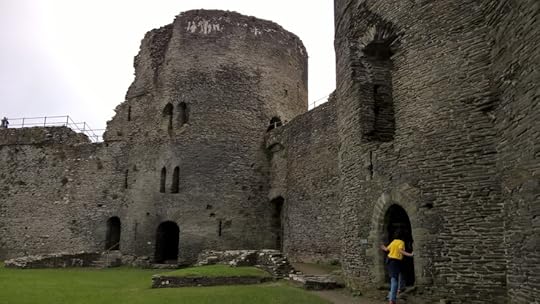 Cilgerran Castle where Nest was probably kidnapped from her Norman husband, Gerald FitzWalter, by the Welsh prince Owain ap Cadwgan. A medieval chronicle describes Nest saving her husband’s life by uging him to escape the attackers through the garderobe (the toilet chute).
Cilgerran Castle where Nest was probably kidnapped from her Norman husband, Gerald FitzWalter, by the Welsh prince Owain ap Cadwgan. A medieval chronicle describes Nest saving her husband’s life by uging him to escape the attackers through the garderobe (the toilet chute).Filed under: Blog, Historical Fiction Tagged: books, middle ages, wales, women in history








September 22, 2016
Non-human, non-animal seminar Z to A
Zooetics – Nomeda & Gediminas Urbonas, Tracey Warr & Viktorija Siaulyte, in Frontiers in Retreat, 2014-2018
https://www.facebook.com/pages/Zooetics/347421948771673?fref=ts
Thompson, D’Arcy Wentworth
On Growth and Form, Cambridge: Cambridge University Press, 1992.
Stone, Christopher D.
Should Trees Have Standing?: Law, Morality and the Environment, Oxford: Oxford University Press, 2010 (originally published 1974).
Schwenk, Theodor
Wilkens, Andreas; Jacobi, Michael & Schwenk, Wolfram, Understanding Water: Developments from the Work of Theodor Schwenk, Edinburgh: Floris, 2005.
Schauberger, Viktor
Alexandersson, Olof, Living Water: Viktor Schauberger and the Secrets of Natural Energy, Dublin: Gateway, 1990.
River Runs – Nomeda & Gediminas Urbonas, Tracey Warr & Giacomo Castagnola at Modern Art Oxford, 2012
Remote Performances – London Fieldworks with Tracey Warr and other artists
Gilchrist, Bruce; Joelson, Jo & Warr, Tracey, eds. (2015) Remote Performances in Nature and Architecture, London: Routledge.
Pixelache Festival 2016: Interfaces for Empathy
Paz, Octavio
My Life with the Wave, 1949
Papadopoulos, Dimitris
Generation M: Matter, Makers, Microbiomes:: Compost for Gaia
Museum of Nonhumanity
http://museumofnonhumanity.org/
Meanda – water novella by Tracey Warr (in English and French) and twitter fiction
@Meanda55555
McKay, Christopher
Planetary Ecosynthesis on Mars: Restoration Ecology and Environmental Ethics, 2007
http://esseacourses.strategies.org/EcosynthesisMcKay2008ReviewAAAS.pdf
Lopez, Barry
Arctic Dreams, London: Vintage, 2001.
London Fieldworks
Gilchrist, Bruce & Joelson, Jo, eds., London Fieldworks: Syzygy/Polaria, London: Black Dog Publishing.
Lem, Stanislaw
Solaris, London: Faber & Faber, 1971.
Le Guin, Ursula
The Dispossessed, The New Atlantis, The Word for World is Forest …
Kenchington, Sarah
Euphonium at Sea
Itaranta, Emmi
Memory of Water, London: Harper Voyager, 2014.
Gooley, Tristan
How to Read Water, London: Sceptre, 2016.
Frontiers in Retreat
http://www.frontiersinretreat.org/
http://frontiersinretreat.tumblr.com/
Huuskonen, Juha & Nurmenniemi, Jenni, eds. (2016) HIAP Helsinki International Artists Programme, 2015, Helsinki: HIAP.
Fishman, Charles
The Big Thirst: The Secret Life and Turbulent Future of Water, New York: Free Press, 2011.
Exoplanet Lot – organised by Maison des Arts George Pompidou, Cajarc, France with Tracey Warr, Tania Candiani, HeHe, Ludwig, Thomas Lasbouygues, Caroline Le Mehaute and Angelika Markul
https://www.facebook.com/exoplanetlot/
Deakin, Roger
Waterlog, London: Vintage, 2000.
Cheever, John
‘The Swimmer’ in Collected Stories
https://loa-shared.s3.amazonaws.com/static/pdf/Cheever_Swimmer.pdf
Canavan, Gerry & Robinson, Kim Stanley
Green Planets: Ecology and Science Fiction, Middletown, Connecticut: Wesleyan University Press, 2014.
Bateson, Gregory
Steps to an Ecology of Mind, Chicago: University of Chicago Press, 2000.
Bataille, Georges
‘L’informe’ in The Critical Dictionary, 1929.
http://aphelis.net/georges-bataille-linforme-formless-1929/
Ballard, J.G.
The Drowned World, New York: Berkley Books, 1962.
Vermilion Sands, New York: Berkley Books, 1971.
Bachelard, Gaston
Water and Dreams, transl. Edith R. Farrell, Dallas: Pegasus, 1983.
Arnold, Bram Thomas
Actions For & Against Nature http://www.bramthomasarnold.com/index.php?/news/actions-for-and-against-nature/
Filed under: Blog, Uncategorized Tagged: art and ecology, interspecies, water








September 19, 2016
Interview with novelist Hazel Gaynor
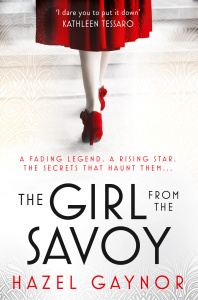
My interview with novelist Hazel Gaynor has just been published on The Displaced Nation website. Gaynor’s new novel, The Girl from the Savoy, conjures up a vivid picture of London and social change in the 1920s.
Filed under: Blog Tagged: books, historical fiction, women in history











